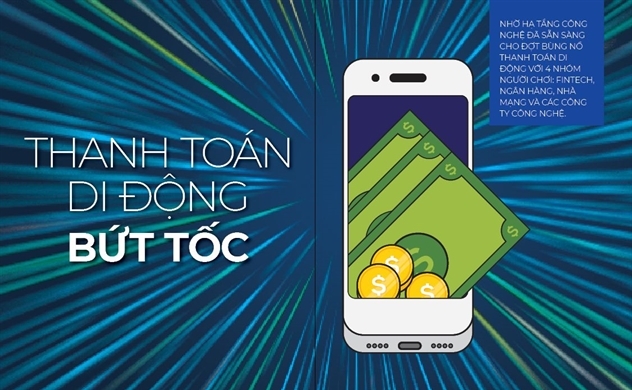Mobile payment service now ready for big changes
2019/03/08
Experts say the technological infrastructure in Vietnam is ready for the mobile payment boom.

Thomas William Tobin, retail banking director of Vietcombank, said that 2019 will witness big changes in payment technology.
He placed emphasis on the development of contactless cards after the State Bank of Vietnam (SBV) issued standards for domestic chip cards and for QR Codes. Vietcombank will soon upgrade points of sale to accept contactless cards.
Many banks have announced plans to use advanced technological solutions in mobile payment services, including biometric authentication, QR Code, Tokenization, contactless and mPOS technologies.
2019 is the year to witness big technological changes in the payment service sector. Nguyen Dang Hung, deputy CEO of NAPAS, the national payment portal, said: “The infrastructure for mobile payment is ready.”
In late 2018, SBV issued two important sets of standards for domestic chip cards and QR Code. The application of common standards will help synchronize cards and card-accepting devices.
As for QR Code, having a common standard will help stop the current "everyone is for himself" situation. The common standards will allow apps of credit or fintech organizations to be used for payment for services connected to other payment intermediaries.
Uniform standards has helped AliPay and WechatPay obtain market share in China.
Experts have also mentioned ACH (automatic clearing house) as an important component which implements small-value payment services and helps bank customers make transactions via different options for personally identifiable information, except account number of cards.
Most recently, the PM suggested a new way of identifying accounts with phone numbers. If so, mobile network operators could also be potential fintechs with their existing database.
In general, transaction platforms will allow involved parties to join the same playing field where all can receive benefits. This allows intermediary payment institutions to expand networks at reasonable costs.
For example, e-wallet A can connect 10,000 POS and bank B 5,000 POS. Once a common standard is applied, the bank’s customers will be able to access the 10,000 POS of e-wallet A without having to install another app.
However, some experts still doubt mobile payments could see a boom in the time to come.
An expert said that many Vietnamese remain reluctant to make e-transactions because they think Vietnamese service providers are still not technologically capable of preventing problems.
A high number of problems occurring with bank cardholders have worried them. In addition, there are other latent risks, from operation risks (electricity cut, natural calamities), the digital divide between people with deep technology knowledge and those who are less knowledgeable.
